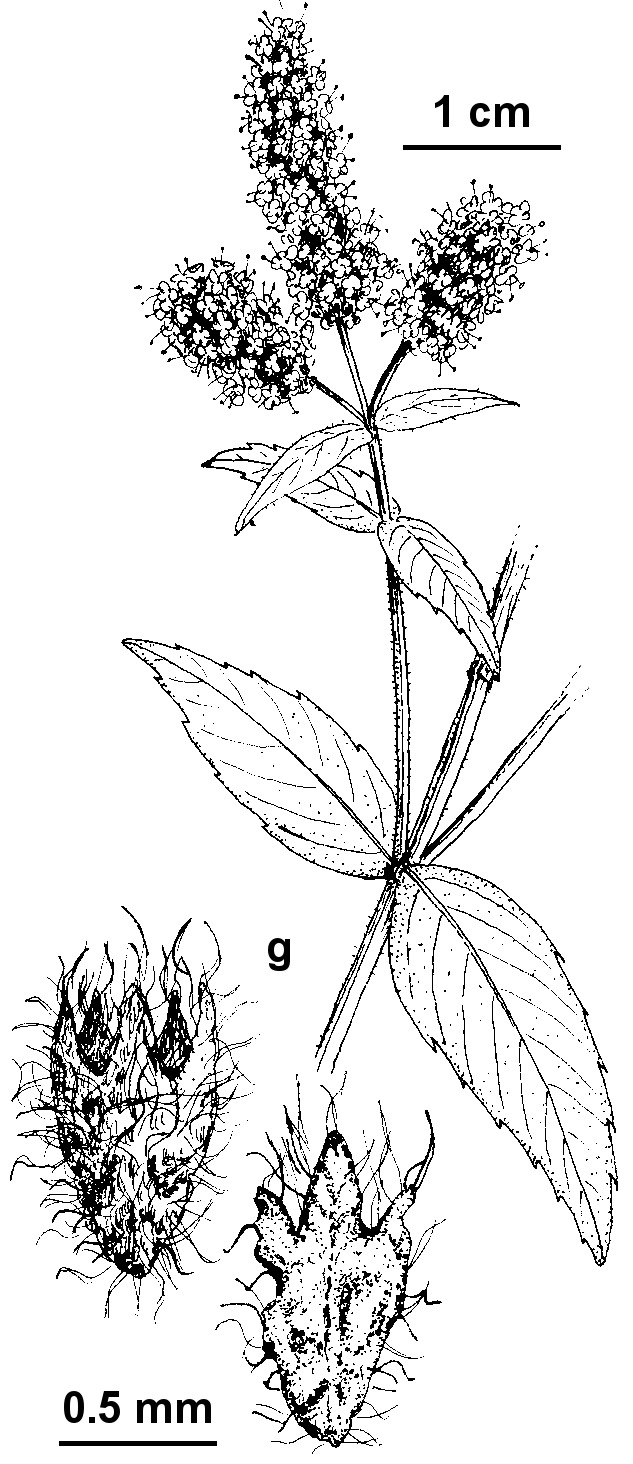Mentha longifolia
(L.) Huds.Erect, rhizomatous herb to c. 1.5 m high, often rooting at lower nodes; branches villous, often tinged purple. Leaves sessile (rarely very shortly petiolate), ovate, 20–80 mm long, 10–30 mm wide, upper surface hirsute, lower surface grey-villous, veins strongly impressed above, apex acute, base cordate or truncate, margin serrate. Inflorescence terminal, 4–10 cm long; flowers in dense, many-flowered clusters, at least some internodes usually apparent; pedicels shorter than to subequal to calyx. Calyx 1.5–2.5 mm long, 10-veined, lobes half to as long as tube, villous; corolla white or pink, pubescent, exceeding calyx by 1–1.5 mm, lobes c. 1 mm long, the posterior one entire or barely emarginate; anthers strongly exserted. Flowers Feb.–Apr.
Gold. Also naturalised SA. Native to western Europe. Known in Victoria from a naturalised occurrences amongst Typha in a creekline at Spring Gully near Bendigo.
Conn, B.J. (1999). Lamiaceae. In: Walsh, N.G.; Entwisle, T.J., Flora of Victoria Vol. 4, Cornaceae to Asteraceae, pp. 418–459. Inkata Press, Melbourne.
 Spinning
Spinning
